|
You might think I was out of things to say about pillywiggins, but you would be wrong! I've begun keeping a list of any books I can find that mention them. This is an opportunity to see how new folklore develops in the era of the Internet. There are far too many works to list here, but here are a few: Haunts & taunts: a book for Halloweén and all the nights of the year by Jean Chapman (1983) At this point, the second book ever that I know features pillywiggins. Here, "Pillywiggins" is the given name of a baby fairy in a retelling of the fairytale "Katie Crackernuts." The name also appears in a list of fairies later on. Fairies & Elves, the "Enchanted World" series (1985) The Enchanted World was a twenty-one-book series released by Time Life Books. The books were edited by Ellen Phillips, with Tristram Potter Coffin as primary consultant. The series was available through mail order. TV commercials struck a creepy, mysterious tone and featured horror actor Vincent Price. Fairies & Elves was book three. It primarily recounts folktales from around the world, with one very brief description of pillywiggins, mentioning that they hide inside flowers and are about the size of bees. The illustration shows long-haired, butterfly-winged nymphs peeking out of the tops of wildflowers. This is the earliest picture of pillywiggins I have found, unless you count the unidentified dancing gnomes in Haunts & Taunts. Various books by Pierre Dubois, 1991-onwards Dubois has mentioned pillywiggins in many of his works, but I am unsure what the first one was. I know he was including them at least by 1991, namedropping them in his graphic novel Pixies. The thing about Dubois is that he is a creative writer, not a folklore scholar. He regularly alters folklore creatures to suit his purposes. Parisette (a plant) and Tisanière (an herbal tea infusion) show up as fae creatures in his books. “Freddy” – Freddy Krueger! - gets an entry in a list of bogeymen. And then there are the many creatures which appear nowhere before Dubois's writings: Danthienne, H'awouahoua, Lorialet, Scarille, Tiddyfollicoles, etc. Many of these have since made their way into other fantasy works. In La grande encyclopédie des lutins (1992), Dubois claims to have found a mention of pillywiggins among other fae in an 11th-century manuscript titled Aelfsidem, translated by "W.T. Dodgsons Luchtat, 1334, Meinster, p. 526." Dubois and people quoting him are the only ones ever to mention this manuscript. In addition, the "quotes" from Aelfsidem read exactly like everything else Dubois writes, and the fairies, pixies, and undines it lists are highly anachronistic. (If you look for fairylike beings in medieval manuscripts, you’re more likely to find incubi, neptuni, fauni, and dryades.) Dubois frequently makes up fictional quotes in the playful way of a fantasy writer building a world. One example is his famous scholar “Petrus Barbygère” - who is, in fact, a fictional character and the lead of one of Dubois's comic series. This has not stopped a few confused authors from quoting Dubois's in-universe books and people as sources. His Encyclopédie des Fées gives a longer description of pillywiggins, explaining that they have insectoid characteristics and can take the form of bees or dragonflies. The text is rife with errors. Francis James Child becomes "Frances Jammes," and the artist Cicely Mary Barker is "Cecily Mary Broker." Nevertheless, Dubois' work ushered pillywiggins into French fairylore. A Witch’s Guide to Faery Folk by Edain McCoy (1994) Okay, so first off, McCoy has been a figure of some controversy among Wiccans, being particularly infamous for claiming that the potato was sacred to the ancient Irish Celts. (The potato was introduced to Ireland around the 16th century.) She bases this book in folklore, but then runs in her own direction with it, creating fanciful and detailed descriptions for various “faery” races. She introduces the "saleerandee," a Welsh lizard faery whose name resembles the salamander, and the “attorcroppe,” a serpent-like faery. She is the only source for these creatures. She also transforms the Yucatec deity Sip into teensy, shy Mayan fairies called Zips and the German moss-covered dwarves, Mooseleute, into the pretty butterfly-winged Moss People. She makes the pillywiggins friendly, cute and sweet, concerned only with blossoms and springtime. They ride upon bees. She names their sexy, scantily-clad blonde queen "Ariel." Everything about this Ariel corresponds to the Ariel of Shakespeare's Tempest.
In fact, in art and costuming, Ariel is frequently a feminine figure with golden hair and gauzy white clothing. McCoy may have been inspired by Fairies & Elves’ mention of cowslips and honeybees, combined with Ariel’s speech in The Tempest. There would have been plenty of available artwork featuring Ariel that increased the similarities. McCoy’s guide to fairies has been copied and circulated online in its entirety since at least 2001. A Basket of Wishes, by Rebecca Paisley (1995) A romance. Splendor, princess of the Pillywiggins, who has vast magic powers and weeps diamonds, has to bear some human guy's child. Here, Pillywiggin is a realm of Faery. Its inhabitants are referred to as Pillywiggins, Pillywiggin fairies, pixies, sprites, elves or imps. Their natural form is tiny humanoids the size of "the span of a large butterfly's wings." They can grant wishes as well as fly with or without the aid of wings (which are apparently detachable). Physically, they are identical to humans except that they are incredibly beautiful and exude stardust, not unlike Tinker Bell. Overall, they serve as an amalgam of fairy traditions old and new. Their queen is the Tooth Fairy. Buttercup Baby by Karen Fox (October 2001) A romance. Ariel, queen of the Pillywiggins, who has vast magic powers and weeps opals, has to bear some human guy's child. Karen Fox wrote four books for Jove Books' "Magical Love" series, and she used pillywiggins as a race of garden fairies. They apparently make up the majority of the fae and serve King Oberon. They seem uniformly female and very beautiful, and they are distinct from pixies (mischievous miniature trolls who serve Queen Titania). Fox's use of Queen Ariel points to Edain McCoy's work. Pillywiggins and the Tree Witch, by Julia Jarman (2011) A chapter book for younger readers, in which Pillywiggins is the personal name of one fairy. Jarman's Pillywiggins is a refreshing departure from the twee miniature flower goddesses seen elsewhere on this list. She's a tough, tomboyish loner, repeatedly contrasted with the other sparkly pink fairies. Although she looks eerie, she's a heroic figure. There is a scene where she senses plants coming alive on Midsummer’s Eve, but otherwise she doesn’t seem to be associated with flowers that much. I contacted Ms. Jarman and learned that this Pillywiggins was based on a doll found at a craft fair. Ms. Jarman turned to the Internet in order to find out what the name meant, which is the case for many authors and researchers these days, including me. Atlantide: La naissance by T. A. Barron (2016) This is a weird example. In the original English version, Atlantis Rising, the characters encounter tiny forest fairies with wings and antennae. These fairies are called "Quiggleypottles." In the French translation, their name is mysteriously replaced with "pillywiggins." I’m not sure why it was necessary to substitute anything for Barron’s original creation. Does Quiggleypottle sound bad in French? This does indicate, however, that the translators were familiar with pillywiggin as a word for tiny flower fairies. CONCLUSION Pillywiggins have inspired songs (at least three; the ones I've found are either French or attribute pillywiggins to French tradition). They are monster-insects in the video game Final Fantasy XI. Quite a few small businesses are named after them. You can buy pillywiggin dolls on Etsy. A book of cat names suggests Pillywiggin as a charming name for a kitten. And, as of April 2019, a pillywiggin has appeared in the anime "Fairy Gone" (though it doesn't look much like a traditional fairy). I still can't trace pillywiggins any farther back than 1977, and I have yet to find a single scholarly collection that mentions them. It’s entirely possible that they originated in the 70s, and over the next 42 years, took root in the modern imagination and spread across the globe.
I wrote to English folklorist Jeremy Harte as part of my continuing research. He could find no evidence of pillywiggins as part of folklore - which has been typical for me and everyone I've contacted. There are, of course, similar words like Pigwiggen, and he pointed out another similar fairy name, Skillywiddens. Pillywiggin is actually a perfect combo of those two. He also pointed out a very interesting possibility: "from the way that [the 1977 source] mentions them, it’s possible that she may mean, not ‘there is a Dorset tradition about Pillywiggins’ but ‘there are traditions about tiny flower spirits, just like the (sc. literary) Pillywiggins from Dorset’. In that case we’re back to searching children’s literature." The source might also be TV or radio rather than a book. The only thing that can truly settle the issue is to find a source for pillywiggins that predates Field Guide to the Little People. If an older source is found, it will probably be a piece of media from the 60’s or 70’s, possibly connected to Dorset and intended for children. Again - if you have any information to add, please let me know! [This post was edited 1/3/2020 with a spelling correction.] Previous entries: Text copyright © Writing in Margins, All Rights Reserved
0 Comments
Leave a Reply. |
About
Researching folktales and fairies, with a focus on common tale types. Archives
July 2024
Categories
All
|
Writing in Margins
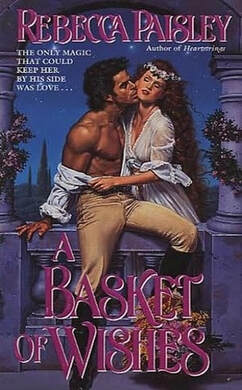
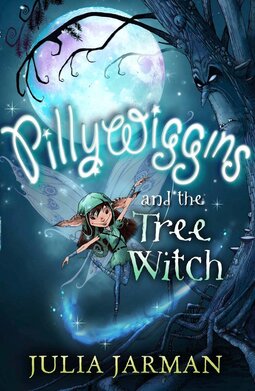
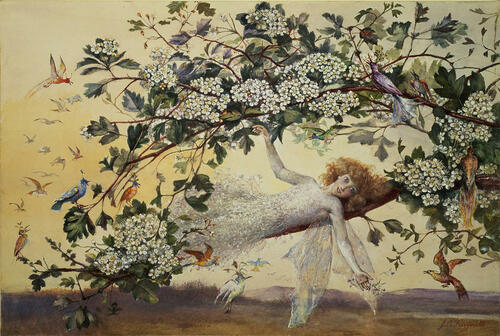
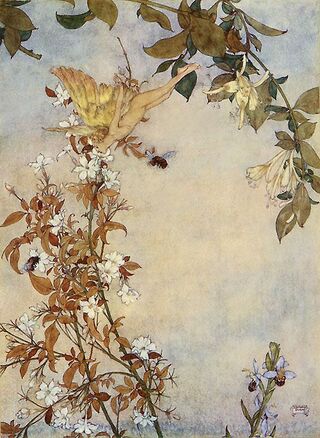
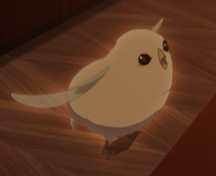
 RSS Feed
RSS Feed
